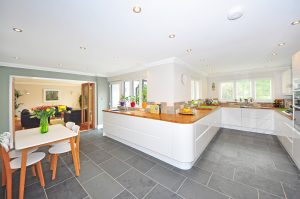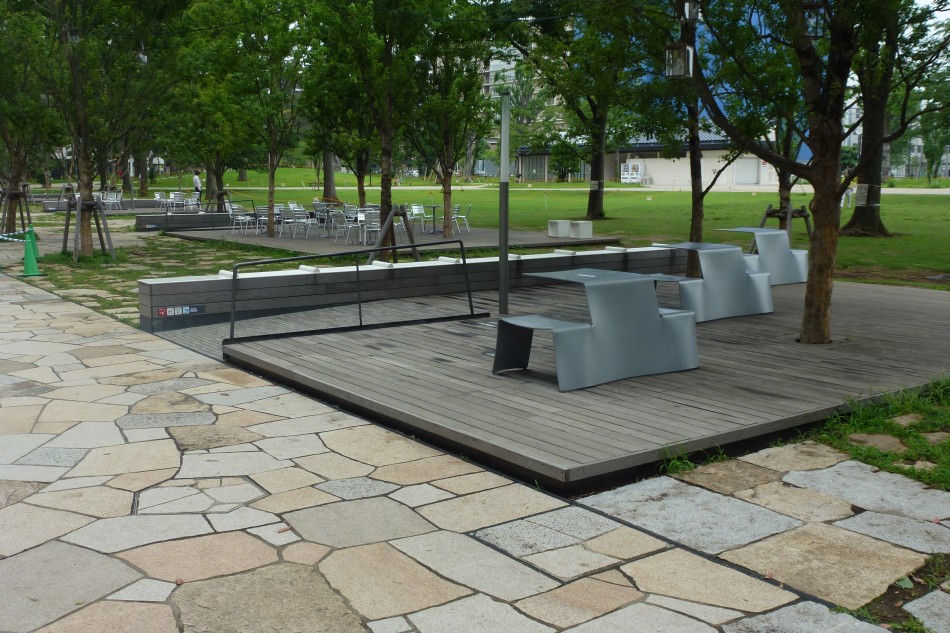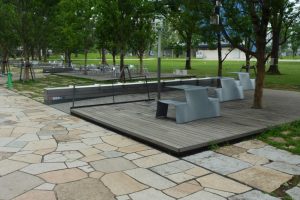“In my more miserable moments I think we’ll never get it right, and people just ignore it, and building control officers don’t implement it, and we still see buildings where somebody says it’s accessible, and it’s not accessible at all. We’re still designing public spaces with cobbles, brand new public spaces with cobbles and seats that have got no arms or backrests, and they don’t understand that an older person can’t get up off a concrete stone bench. Why do they keep designing stuff like that?” (access consultant x)
This article by Charlotte Bates investigates why “they keep designing stuff like that”. Focusing on inclusive design – a niche approach that strives towards more accessible, flexible and democratic designs – the article examines the underlying values, practices, and sticking points entangled in the challenge of designing and making more equitable products and places.

As the geographer Doreen Massey writes, “The challenge of the negotiation of place is shockingly unequal.” (2005, 169). Despite – and sometimes even because of – the introduction of now taken-for-granted design features intended to make access to urban environments more equitable, our town and city spaces continue to frustrate, fail and ultimately omit many of us, from parents and children to people who are elderly, infirm and impaired.
Our research investigates why “they keep designing stuff like that”. Focusing on inclusive design – a niche approach that strives towards more accessible, flexible and democratic designs – we examine the underlying values, practices, and sticking points entangled in the challenge of designing and making more equitable products and places. To date, we have interviewed a range of professionals in the UK, including company directors, access consultants, architects, engineers, and educationalists. These conversations provide insight into the methods and tools used by these professionals, highlight the difficulties and limitations that they face, and offer a glimpse at the possibility that progress is being made.
Values
Inclusive design has developed and evolved in response to increasing recognition that mainstream design approaches fail to take human diversity into account. Anthropometric data, regularly used in architectural and industrial design to incorporate information about human body proportion, posture and movement, constructs the human as a healthy adult of a particular size and ability. For example, French architect Le Corbusier, a pioneer of modern architecture, developed the ‘modulor’, a universal system of proportions based on the dimensions of a six foot male.
Such schemas have the admirable intention of placing the body at the centre of design, but, perfectly proportioned, it is a minority body. The result is design that is uncomfortable and out of reach for the vast majority of the population. By valuing human diversity and aiming to make places that work for everyone, inclusive design promises, as a landscape architect said to us, “to open up the challenge of designing for us as we really are, as complex beings rather than the Corbusian perfect man” (landscape architect x).
Practices
How inclusive design attempts to achieve its aim is a question that needs unravelling. One key issue that we have focused on to date is the translation of inclusive design values into methods and tools that embrace, rather than reduce, embodied human diversity. In practice, these tools and techniques range from employing expert access consultants, to using ‘personas’ (descriptions of potential ‘users’ based on market research) and simulating the physical experience of being elderly or impaired with specially designed goggles, gloves and even entire body suits. The ‘Third Age Suit’ developed by academics at Loughborough University’s Ergonomics and Safety Research Institute for the Ford Motor Company, for example, is intended to “literally let someone walk in the shoes of an older person and experience firsthand what life is like for someone with restricted mobility”.
Through ‘empathic engagement’, these tools offer the possibility of opening design practices to the lived experiences of ‘users’ and diversifying the body at the centre of design. But, as many of the people we spoke with recognised, they can also be used as ‘quick fixes’ that effectively reduce the complexity of human embodiment. As one designer told us, “the persona itself will probably be three or four slides on PowerPoint. The description about their disabilities is probably a sentence or two” (designer x).
Sticking points
In addition to the difficulties of incorporating a diverse understanding of lived embodiment into design practices, there are also a number of sticking points in the design process that threaten the promise of inclusive design. From the start, designers can find themselves having to convince clients that designing for ‘less sexy users’ is the right approach. Instead of taking the needs of the population into consideration, and despite the market potential of the ‘golden economy’, some clients reportedly prefer to direct their business at the ‘young and healthy’ market sector.
At the next stage, support for inclusive design can be overridden by contractors who ‘value engineer’ to deliver projects on time, on budget and on value, so that “even if you build inclusive design in at the design stage, you can’t guarantee that it will be kept all the way through procurement – if somebody can find a cheaper way of doing things often they will try to” (designer y).
The installation of design features can also be problematic, as one engineer explained, “the difficulty is executing it and knowing what to do… It’s generally done, but unfortunately it’s not done in the correct manner all the time.” (engineer x). Tactile paving is a prime example. When badly installed, it negates the information it is designed to provide and runs the risk of becoming a public hazard. Common installation issues include using the wrong colour paving, a lack of colour contrast with surrounding paving, incorrect use of warning patterns, and inconsistent use of paving types within schemes.
Finally, there are issues surrounding the maintenance and care of products and places. Once in the public realm products are often left to fend for themselves, as we were told, “nobody takes ownership of it, it’s out on the street 24/7, it’s out in all weather conditions, and it gets abused” (designer z).
Negotiating place
The process of inclusive design, from ideation to installation, reveals a literal ‘throwntogetherness’ of place – a term coined by Massey to signal the whirl of global diversity and difference in contemporary urban life. I use the term here to express the precarious and sometimes haphazard way in which places negotiate their way into life. This throwntogetherness reveals the complex and sticky processes through which designs are shaped and ultimately puts the viability of inclusive design at risk.
Our research highlights the labour towards making more accessible and democratic places being undertaken by a passionate group of people who are wrestling with the lack of a joined-up or universal agenda. It has led us to some remarkable and award-winning products, buildings and public spaces. But it also reveals continuing professional and political ignorance of human diversity and the need to take responsibility for making better places.
 sign of products and environments to be usable by all people, to the greatest extent possible, without the need for adaptation or specialized design.
sign of products and environments to be usable by all people, to the greatest extent possible, without the need for adaptation or specialized design.

 Accessible Landscaping Tip: Incorporate Smooth Surfaces
Accessible Landscaping Tip: Incorporate Smooth Surfaces
 sal
sal 